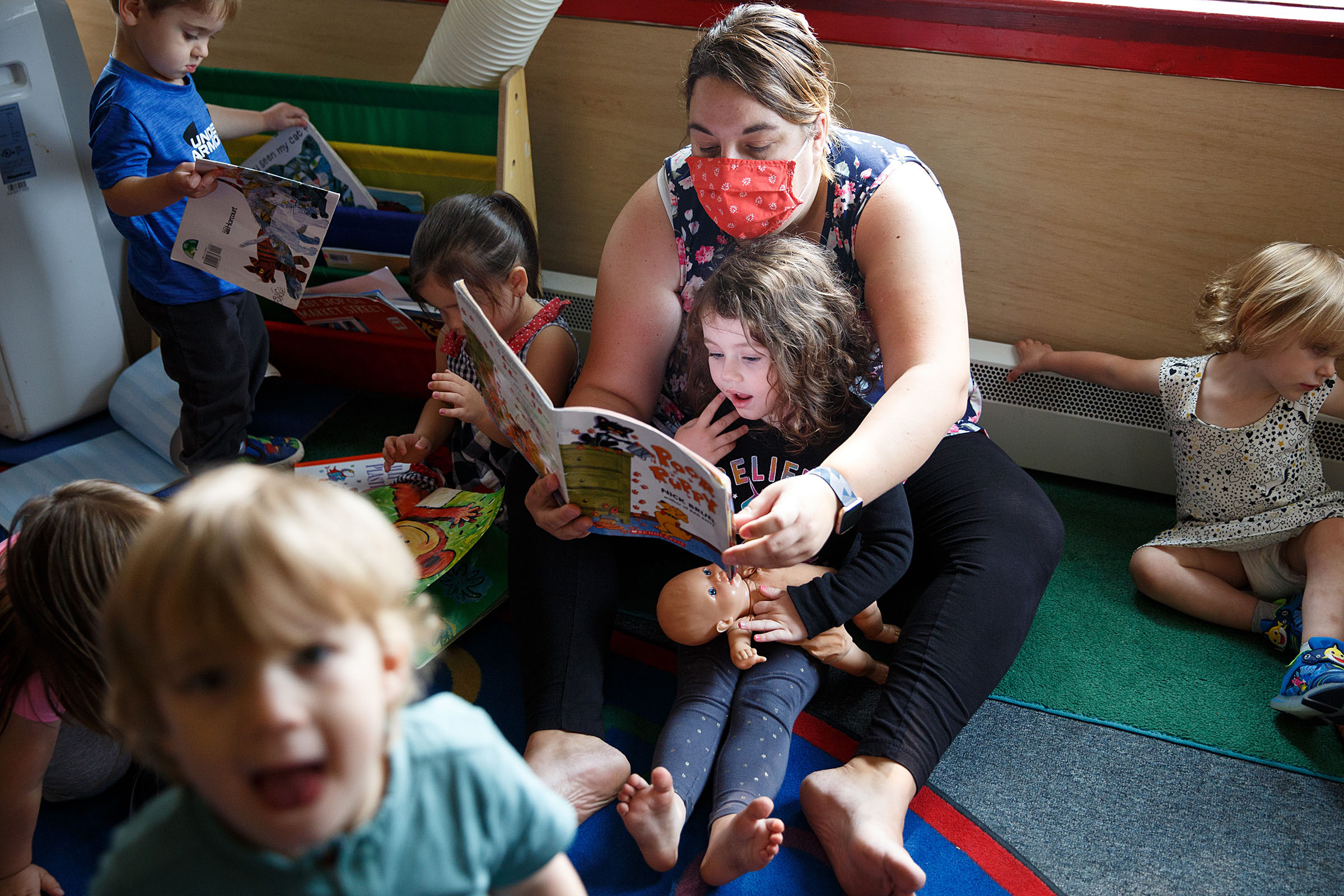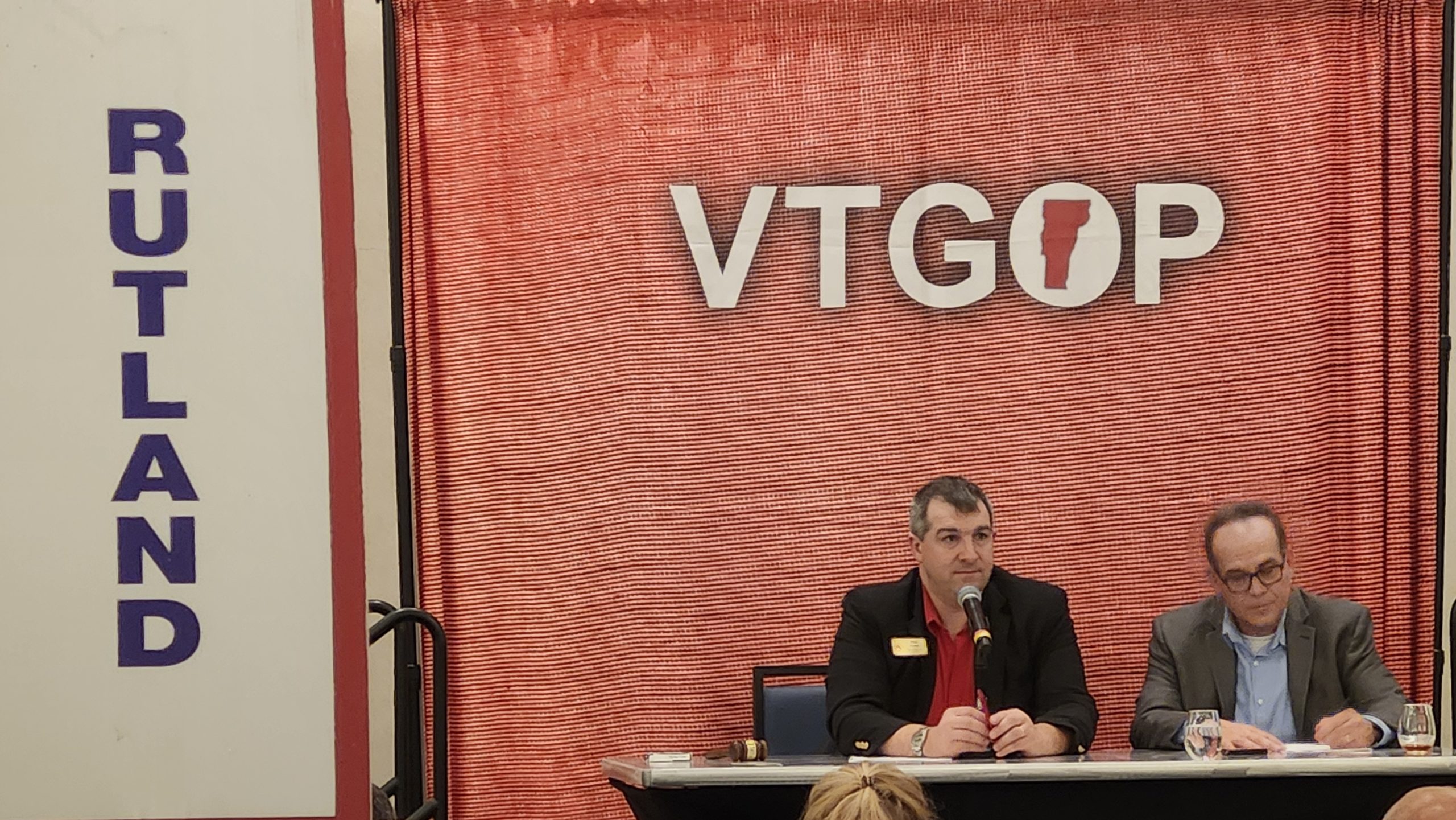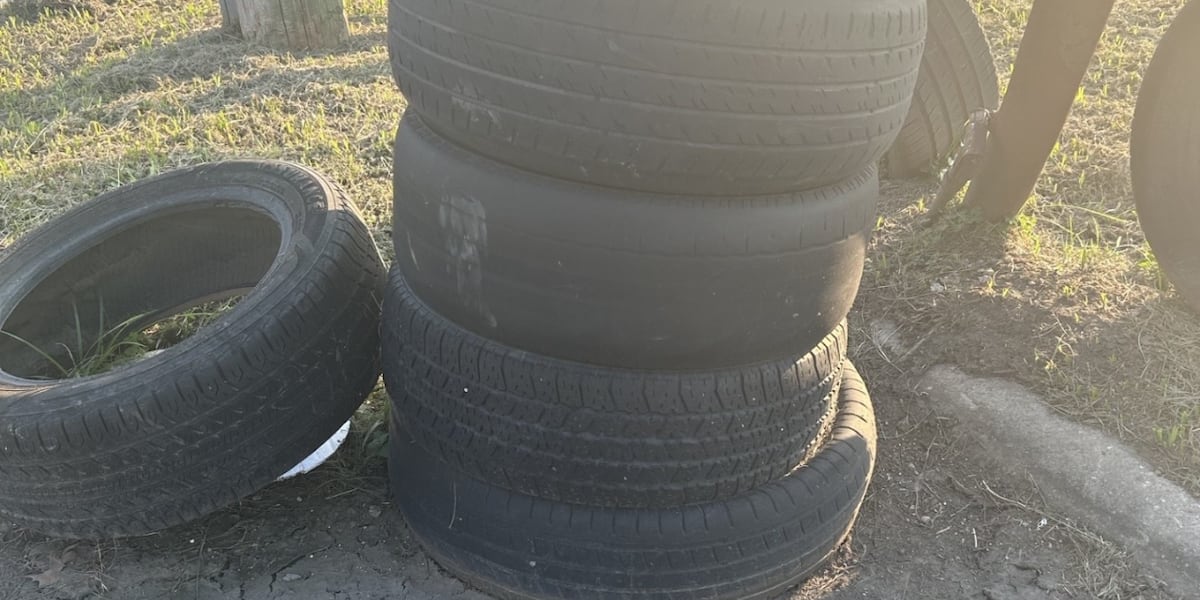Last month, the New Hampshire Department of Health and Human Services announced new goals for increasing child care capacity. Some advocates, however, say they’re concerned that the state may be “putting the cart before the horse.”
DHHS Commissioner Lori Weaver said the department’s Roadmap 2025-2027 aims to set “priorities and initiatives” for the biennium — including one for a child care system struggling with workforce shortages, a lack of capacity in centers and programs, and high tuition prices.
The department published two goals to try to address those constraints.
The first is to increase child care access and the capacity of child care providers by enrolling 10% more children from high-need communities by September 2026.
In New Hampshire, there are fewer spaces available in child care centers and programs than families that want to access them. According to the New Hampshire Fiscal Policy Institute, the state’s capacity to provide licensed care for children under age 5 dropped almost 13% between 2017 and 2023. Between 2019 and 2023, there was an average annual shortage of about 9,107 child care slots.
The department intends to identify communities “in need of increased access to child care” and “implement a plan to increase the number of children enrolled in licensed slots.”
Shannon Tremblay, director of the New Hampshire Child Care Advisory Council, said that while the goal does tackle one of the issues of the crisis, capacity, it does not touch on the biggest issue: the lack of workforce.
“I think the state’s vision is putting the cart before the horse a little bit. We’re just not there yet,” she said. “We have to worry about the workforce, making livable wages, getting people into the workforce, and then you are able to fill classrooms back up.”
By law, for safety and quality reasons, child care and early education programs are required to maintain certain child-to-provider ratios based on the child’s age. Without the staff, more children cannot be enrolled.
The solution is not as simple as hiring more people.
Early child care providers get paid nearly $9 an hour less than the average working Granite Stater — or $15.62 compared to $24.03, according to the Fiscal Policy Institute. Coupled with the required certifications and credentials, constraints on tuition increases due to fears of pricing families out, and higher wages for similar jobs like pre-K or kindergarten teachers, it is hard for program owners to hire more providers.
Through the second goal, DHHS hopes to work with stakeholders to “assess and quantify” the current funding landscape.
Tuition for child care programs in New Hampshire is expensive. The U.S. Department of Health and Human Services recommends that families spend less than 7% of their income on child care. According to Child Care Aware, a married couple in New Hampshire spends a median of 11.9% of their income on child care and a single parent spends 37.3%.
Families must decide between paying for expensive child care or leaving the workforce to provide that care themselves. Last year, more than 17,000 Granite Staters were out of work because they were caring for a child not enrolled in school or a care program, according to the Fiscal Policy Institute. They also estimated that between $9 million and $14.1 million in potential tax revenue across New Hampshire was lost in 2023 due to unavailable child care slots.
While the state has programs like the Child Care Scholarship program to help subsidize costs, advocates say there is not enough state investment to stabilize the care system.
“Most of our child care providers are on state subsidies themselves,” Tremblay said. “The state has done great things with increasing eligibility for child care scholarships and stuff like that. But even if you get a child care scholarship, you may not have that spot for child care. It’s just like the chicken and the egg kind of thing.”
The state aims to assess funding through a fiscal analysis sponsored by the Early Care and Education Funders Collaborative.
According to Julie Asher, the executive director of the ECEFC, the analysis consists of two pieces: cost modeling and visioning.
For cost modeling, Asher said the analysis will look at the money currently in the state’s child care funding system to identify its sources, where the state can get more, and where the barriers of access are in hopes of achieving a “sustainable, equitable, and high-quality” child care system and workforce. The visioning piece of the analysis will be a “collaborative” effort among early care and education stakeholders to try to find long-term solutions to the problem.
Due to the state’s limited funding capabilities, Asher knows that the department and other stakeholders will have to “be creative” in crafting a vision for the future of high-quality care.
In addition to child care, the roadmap outlines DHHS’ plans to invest in the department’s workforce, improve existing community health initiatives in areas like behavioral health and Medicaid, and enhance customer service for Long Term Care and Contract Lifecycle Management services.





